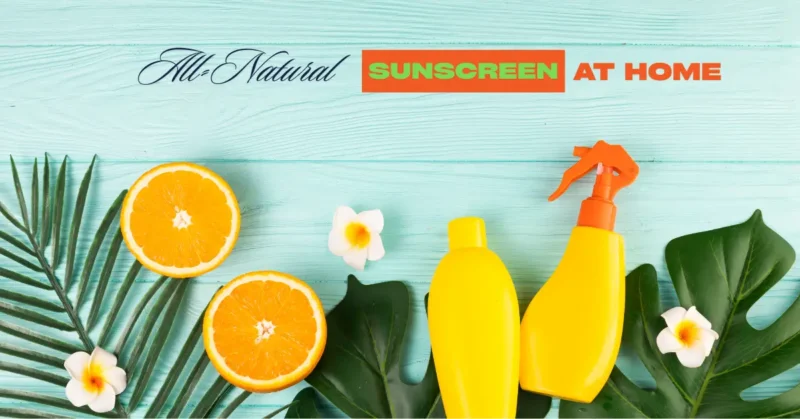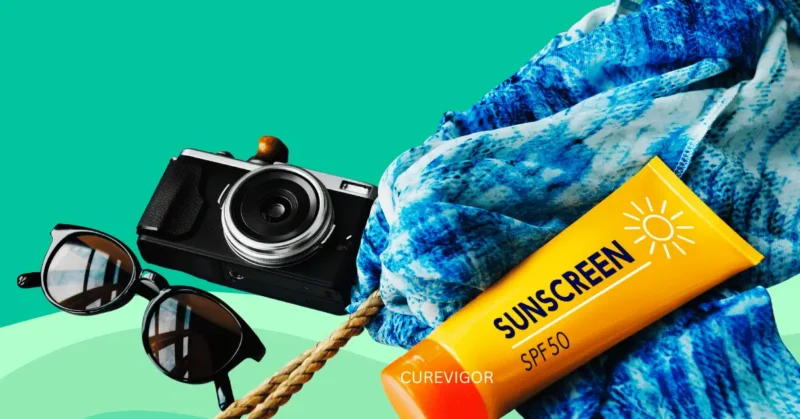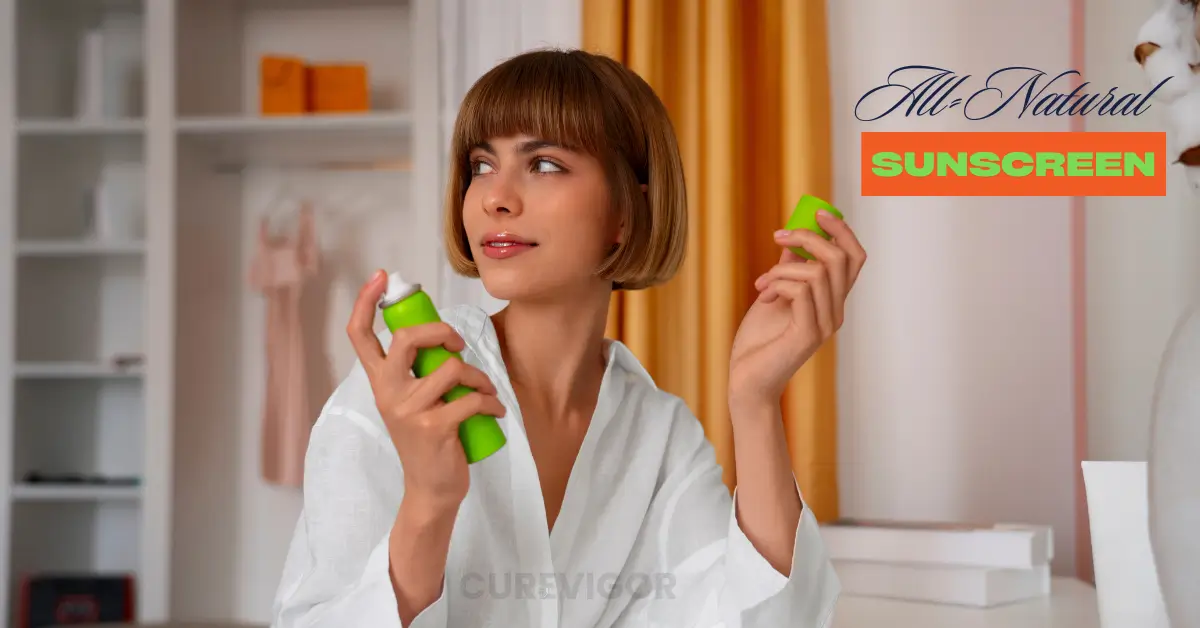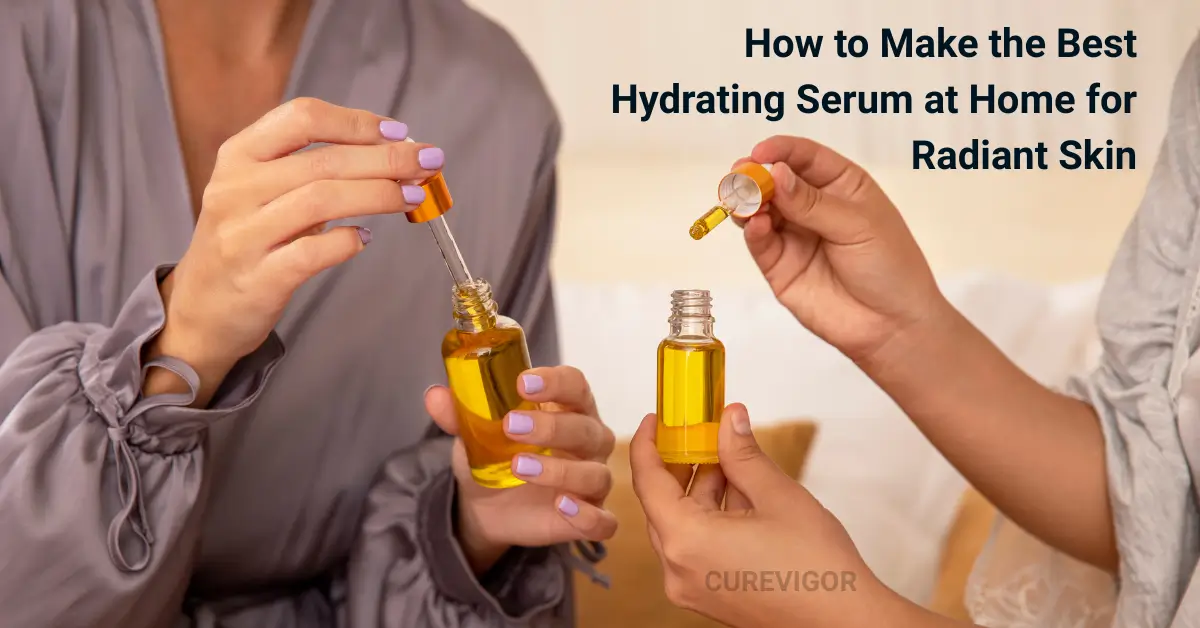Make your own all-natural sunscreen at home using safe, chemical-free ingredients like zinc oxide and coconut oil. Protect your skin the natural way.
Thank you for reading this post, don't forget to subscribe!How to Make Your Own All-Natural Sunscreen at Home
As the days grow warmer and the sun lingers longer in the sky, most of us start thinking about sunscreen. Whether you’re spending time at the beach, hiking, or just running errands, protecting your skin from harmful UV rays is non-negotiable.
But here’s the problem: most commercial sunscreens are loaded with synthetic chemicals that not only irritate sensitive skin but also damage coral reefs and marine life.
That’s where all-natural sunscreen steps in. It’s gentle, safe, and surprisingly easy to make at home. You can create a DIY sunscreen that provides sufficient natural sun protection without compromising the environment or your health using a few easy, skin-friendly ingredients.

Let’s break down everything you need to know—from why natural sunscreens are better, to how to make one yourself, and how to get the most out of it.
Benefits of All-Natural Sunscreen
1. Avoid Harsh Chemicals
Most store-bought sunscreens rely on chemical filters, such as oxybenzone, octinoxate, avobenzone, or homosalate, to block UV rays. These compounds are known for their potential to disrupt hormones, irritate the skin, and harm marine ecosystems.
When you swim in the ocean, these chemicals wash off and contribute to coral bleaching—something that has pushed many countries and islands, such as Hawaii and Palau, to ban them.
An all-natural sunscreen, on the other hand, relies on mineral-based protection. That means no synthetic chemicals, no irritation, and no environmental harm.
Instead of absorbing UV rays and turning them into heat (like chemical sunscreens), mineral ingredients reflect and scatter the rays away from your skin. It’s a physical barrier, not a chemical reaction—and that makes a big difference.
2. Natural Ingredients That Care for Your Skin
When you make your own all-natural sunscreen, you’re not just protecting your skin—you’re nourishing it. Ingredients like coconut oil, shea butter, and red raspberry seed oil offer deep hydration and antioxidant protection.
They help your skin stay soft, smooth, and resilient even under harsh sun exposure.
The actual stars are mineral components like titanium dioxide and zinc oxide. They provide broad-spectrum protection, meaning they shield against both UVA (aging) and UVB (burning) rays.
These minerals sit on top of your skin and start working immediately—no need to wait 15–20 minutes after applying, like with chemical sunscreens.
Unlike synthetic formulas that often clog pores or trigger breakouts, natural ingredients are non-comedogenic, gentle, and safe for all skin types.
3. Complete Customization
The beauty of making your own DIY sunscreen is total control. You can adjust ingredients to suit your skin’s needs—add more zinc oxide for a higher SPF, use lighter oils if you have oily skin, or add soothing essential oils like lavender or chamomile for a calming effect.
You can also play with texture. Want a creamy body butter consistency? Add more shea butter. Prefer something lighter for the face? Use less beeswax. Once you understand the basics, creating your personalized sunscreen becomes second nature.
Key Ingredients for All-Natural Sunscreen
To make an effective homemade sunscreen, you’ll need a balance of moisturizing oils, protective minerals, and binding agents. Each ingredient has a role to play.
1. Zinc Oxide
Zinc oxide is the cornerstone of all-natural sunscreen. It is a mineral compound that produces a physical barrier against UVA and UVB rays by sitting on the skin’s surface.
It’s one of the only ingredients recognized by the FDA for providing proper broad-spectrum protection.
- Why it’s great:
- Non-toxic and non-irritating.
- Works immediately upon application.
- Offers mild antibacterial and anti-inflammatory properties.
When buying zinc oxide for homemade sunscreen, choose non-nano zinc oxide. “Non-nano” means the particles are too large to be absorbed into the skin, ensuring the product remains a surface-level protector.
2. Titanium Dioxide
Titanium dioxide is another mineral powerhouse. Like zinc oxide, it reflects and scatters UV rays, but it’s particularly good at blocking UVB rays—the ones responsible for sunburn.
- Why it’s great:
- Lightweight and smooth texture.
- This product adds opacity and coverage to the sunscreen.
- Works well in combination with zinc oxide for complete protection.
Using both zinc oxide and titanium dioxide together creates a more balanced defense against the sun’s spectrum.

3. Coconut Oil
For good reason, coconut oil is a mainstay of natural skincare. It provides a natural SPF of about 4–5 (but insufficient on its own), is moisturizing, and is high in antioxidants. It also helps the sunscreen spread easily and smell amazing.
- Why it’s great:
- Intensely moisturizing for dry or sun-exposed skin.
- Naturally antibacterial and soothing.
- Adds a light, pleasant scent.
4. Red Raspberry Seed Oil
When it comes to natural sun protection, this oil is a hidden gem. Red raspberry seed oil contains significant amounts of antioxidants, including vitamin E and polyphenols. It has a remarkable natural SPF range, estimated to be between 28 and 50.
- Why it’s great:
- Offers natural UV protection.
- Fights free radicals that cause premature aging.
- Nourishes and rejuvenates the skin barrier.
It’s not a substitute for mineral protection but an excellent booster.
5. Shea Butter and Beeswax
These two ingredients serve as the base for your DIY sunscreen. Shea butter is rich in vitamins A and E, deeply moisturizes, and helps smooth and soften skin.
Beeswax, on the other hand, adds thickness and stability, keeping your sunscreen solid and water-resistant.

The best sunscreen is made with love—and a few natural ingredients.
Simple Recipe for All-Natural Sunscreen
Here’s a tried-and-true recipe that’s easy to make at home. It’s gentle, effective, and smells naturally amazing.
Ingredients:
- ½ cup coconut oil
- ¼ cup shea butter
- 2 tablespoons beeswax
- 2 tablespoons zinc oxide (non-nano)
- 2 tablespoons titanium dioxide
- 2 tablespoons red raspberry seed oil
Instructions:
- Melt the Base Oils: In a double boiler (or a heatproof bowl over a pot of simmering water), combine coconut oil, shea butter, and beeswax. Stir gently until the mixture is fully melted and smooth.
- Add the Minerals: Remove from heat. Slowly stir in zinc oxide and titanium dioxide. Be gentle and wear a mask to avoid inhaling the fine powders. Mix until evenly blended—this step ensures your sunscreen offers even protection.
- Add the Finishing Touches: Stir in red raspberry seed oil. You can also add a few drops of essential oils like lavender or carrot seed oil (known for their skin benefits). Avoid citrus oils, as they can make your skin photosensitive.
- Pour and Cool: Pour the mixture into a clean, airtight container or tin. Let it cool at room temperature until solid. You can store it in a cool, dark place for up to six months.
Tips for Making and Using All-Natural Sunscreen
- Use high-quality ingredients: Choose organic, unrefined oils and cosmetic-grade minerals. The quality of your ingredients determines the safety and effectiveness of your sunscreen.
- Customize it: Want a higher SPF? Add more zinc oxide. Prefer a lighter feel? Reduce the beeswax. You can experiment until you find your perfect blend.
- Test it first: Before applying it all over, test a small patch of skin to check for any reactions.
- Apply generously: Like all sunscreens, coverage matters. Apply a visible layer and reapply every 2–3 hours, especially after swimming or sweating.
- Store properly: Keep your homemade sunscreen away from direct sunlight or heat. If it melts, just stir and let it re-solidify.
How to Estimate SPF
Homemade sunscreens don’t have lab-tested SPF ratings, but you can roughly estimate protection based on zinc oxide concentration.
- 5% zinc oxide: SPF 5–10
- 10% zinc oxide: SPF 10–20
- 20% zinc oxide: SPF 20–40
Adding red raspberry seed oil and carrot seed oil can further boost the natural SPF range. Still, remember that no homemade sunscreen is 100% guaranteed—so it’s best for moderate sun exposure, not all-day beach lounging.
Why Make It Yourself?
Creating your own all-natural sunscreen connects you to what you put on your body. You know every ingredient, understand its purpose, and trust its safety. It’s also cost-effective—one batch can last all season and cost far less than premium “clean beauty” brands.
But beyond the savings, it’s about taking control of your skincare. When you craft your own sunscreen, you’re saying no to unnecessary chemicals, wasteful packaging, and misleading labels.
Environmental Benefits
Choosing chemical-free sunscreen is not just good for your skin—it’s good for the planet. Every year, an estimated 14,000 tons of sunscreen wash off into the ocean, harming coral reefs and aquatic life.
Mineral-based sunscreens are reef-safe, biodegradable, and eco-friendly.
Making your own also cuts down on plastic waste. You can store your sunscreen in reusable glass jars or metal tins, helping reduce your environmental footprint.
FAQs
Q. How to make a natural homemade sunscreen?
To make a natural homemade sunscreen, combine moisturizing oils like coconut oil and shea butter with non-nano zinc oxide for UV protection. Melt the oils and waxes together, then stir in the zinc oxide and optional red raspberry seed oil for an antioxidant boost.
Pour it into a jar and let it set. This DIY blend offers chemical-free sun protection and hydration in one. It’s easy to customize for your skin type and gives you complete control over every ingredient that touches your skin.
Q. Is there a 100% natural sunscreen?
Yes, a 100% natural sunscreen is possible when it uses only mineral and plant-based ingredients. The most effective natural sunscreens rely on zinc oxide and titanium dioxide as their active UV filters—both are minerals that physically block the sun’s rays.
Paired with natural oils like coconut, jojoba, or raspberry seed oil, these sunscreens protect and nourish your skin without any synthetic chemicals. Look for products labeled “non-nano” and “reef-safe” to ensure they’re truly natural and environmentally friendly.
Q. Is Vaseline a sunscreen?
No, Vaseline (petroleum jelly) is not a sunscreen. While it locks in moisture and helps prevent dryness, it provides no UV protection and doesn’t block or reflect harmful rays.
In fact, using Vaseline alone in the sun can increase your risk of sunburn because it may intensify the heat on your skin.
If you want sun protection, you’ll need a product with active UV-blocking ingredients like zinc oxide or titanium dioxide—those are what make a real sunscreen effective.
Q. Can you create your own sunscreen?
Absolutely! You can create your own sunscreen at home using simple, natural ingredients. The key is including zinc oxide or titanium dioxide, which can act as protective shields against UVA and UVB rays.
Mixing these with oils like coconut or jojoba and a little beeswax makes a smooth, hydrating sunscreen balm.
Homemade sunscreen is ideal for those who prefer chemical-free skincare and want to know exactly what goes on their skin. Just remember to test and reapply often for consistent protection.
Final Thoughts
Making your own all-natural sunscreen at home is simple, empowering, and sustainable. With a few natural ingredients—zinc oxide, titanium dioxide, coconut oil, red raspberry seed oil, and a little beeswax—you can create a sunscreen that’s safe, effective, and personalized for your skin.
It’s not just about avoiding chemicals; it’s about embracing natural sun protection that nourishes your skin and respects the environment.
The next time the sun calls, you’ll be ready—with a jar of your own handcrafted, chemical-free sunscreen that’s as good for your skin as it is for the planet.
Ditch the chemicals—make your own sunscreen and glow with confidence.
Get more Health and Beauty Tips.
You might like:


